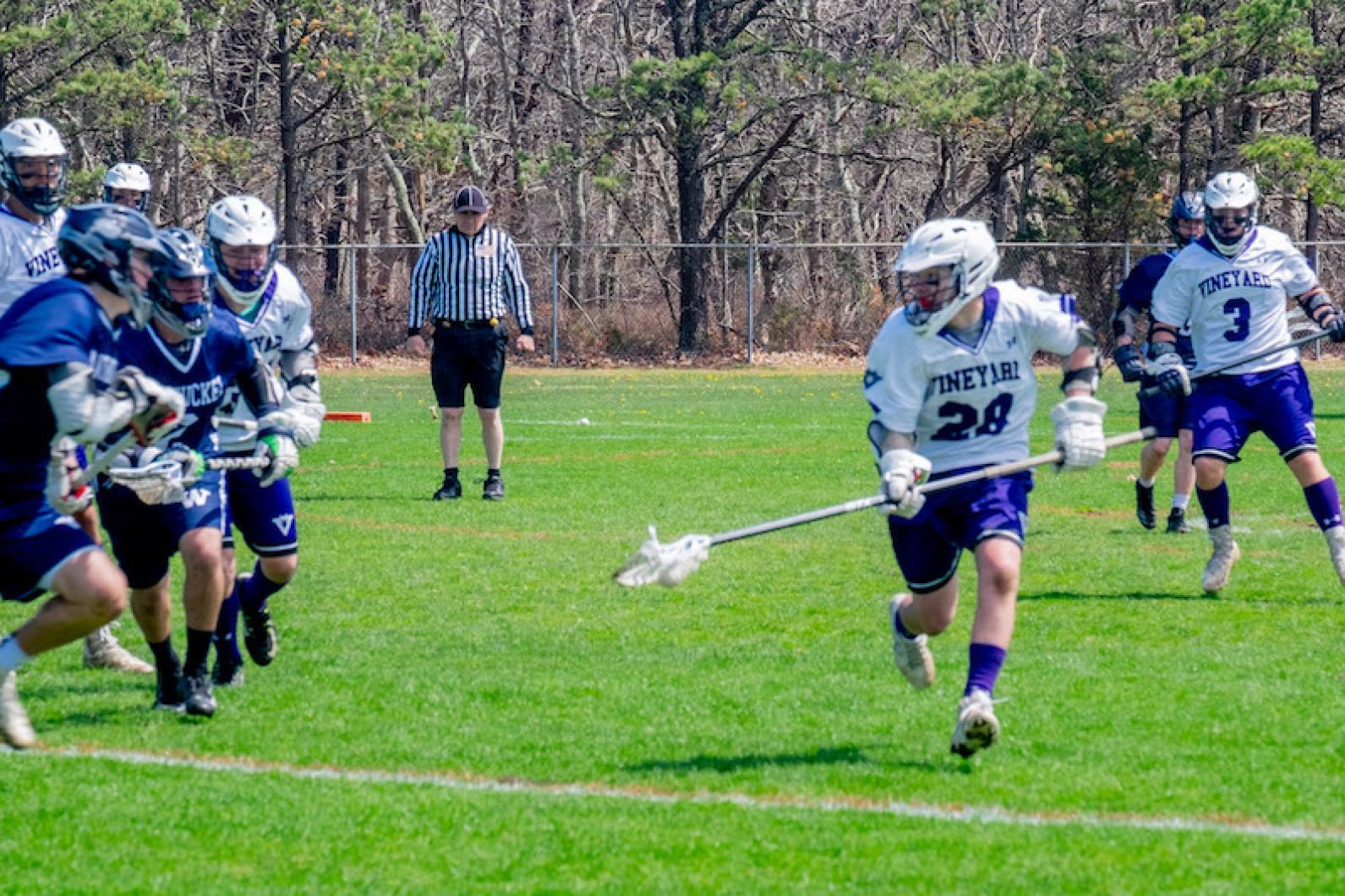This past week a group that opposes the use of synthetic athletic fields solicited voters in Aquinnah, Chilmark, and West Tisbury to vote against the Martha’s Vineyard Regional High School Committee’s use of excess and deficiency (E and D) funds. Excess and deficiency funds are monies that remain unspent from the previous years’ budgets, much like a town’s free cash that is held for specific projects or emergency situations.
The high school is currently asking the towns to approve the use of $350,000 of E and D funds for the purpose of hiring an owner’s project manager and landscape architect to develop construction documents that we can bring to the Martha’s Vineyard Commission for their review of the project. I wish to clarify the school’s stance regarding the issue of E and D funds in the broader context of the urgent need for a track for our students at the high school and larger community in general. This includes the very real need for not simply improved athletic fields, but healthy, resilient and safe athletic fields.
First, and to be clear, it is important to note that the debate about the infield of the track at the Martha’s Vineyard Regional High School is not a debate about whether we should have grass or synthetic turf, but a debate about how to best support grass fields.
Chris Huntress, an expert landscape architect of Huntress Associates was commissioned by school leadership to determine what will best support our children in terms of healthy and safe athletic fields. Mr. Huntress, who has been in the athletic fields business for over 25 years, has determined that the high school can support our desire of a natural grass campus with the installation of one synthetic turf field. Essentially, he determined that in order to support five healthy and safe natural grass athletic fields, the high school needs one athletic field that uses a synthetic surface. Synthetic fields can withstand two to three times the use that grass fields can, allowing our grass fields the necessary rest to strengthen and grow.
The first phase of the project is the construction of a new track with a synthetic turf infield along with a renovation of one of our existing grass fields. The cost of this phase, as outlined in Chris Huntress’s report, will be approximately $6.7 million. In addition to the track and field, this price includes a 3000 square foot stadium field house with bathrooms, concessions, locker rooms, and storage, a 1000 seat grandstand, and ADA compliant walkways. We are confident that fundraising efforts, once construction documents are complete, will successfully raise a significant portion of the cost.
It is important to let you know, while contrary to the claims of some, it is not the intent, nor has it ever been the intent of school leadership to ask taxpayers to fund the entirety of this project. It is our firm belief that private donors are ready to financially support this project.
There is urgency to complete this project. That forms the basis of the high school’s request for the use of E and D funds. In 2016, the high school track was condemned due to its poor condition. Because the track was worn and cracked, our students were unable to use it for athletic events. No home track meets could be conducted on our Island. MVRHS track athletes always traveled to other schools for their meets. In 2017, the track was resurfaced, affording the school a three or four year window of safe use and time to conduct a full track replacement process. Due to the failure of the track’s substructure, a complete replacement is necessary. Because of this urgency, we cannot include this project as part of an MVRHS building renovation project. A construction project at the high school is a minimum of five years away and our track will long since have failed over that time. It is crucial that we act now.
There is a significant amount of research on synthetic surface athletic fields. One can find studies that support virtually any position. Prior to developing a recommendation, I reviewed research studies that have been conducted by unbiased organizations, such as the Massachusetts Department of Public Health, the Connecticut Department of Environmental Protection, the American Orthopedic Society for Sports Medicine, and the Washington State Department of Health, along with research provided by Chris Huntress. These studies addressed issues such as health and safety, injuries and runoff. After studying this information, considering Chris Huntress’s recommendations, listening to input, and debating all considerations, I am confident that synthetic fields are safe, and I fully support Mr. Huntress’s recommendation of the use of one synthetic field to support five natural grass fields as the best plan to support our students.
Additional concerns have been expressed around both the recycling and the cost of the synthetic surface. By partnering with ReMatch Turf Recycling, we will take the necessary steps to ensure that the synthetic carpet is recycled and does not end up in a landfill. The cost outlay for a synthetic surface field is indeed more expensive than a natural grass field. However, because synthetic fields can withstand two to three times as much use as grass fields, they are less expensive when you calculate the cost by use hours. In other words, because we can utilize a synthetic field more often, the cost of use is actually less than a natural grass field. A synthetic surface will be particularly helpful during the wet months of March and April, when our spring sports have started and the fields are wet and muddy.
Our students need safe and healthy athletic fields. On behalf of our school leaders, I am grateful for your support of our students in providing the athletic campus they desperately deserve.
Matthew D’Andrea is superintendent of the Vineyard public schools.




Comments (6)
Comments
Comment policy »